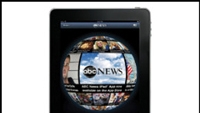Broadcasters leverage social media for midterm election coverage

This year the biggest change in television coverage on election night was not on traditional TV, it was streaming video on social media websites.
Every television network dramatically increased their connections to social media, with several networks streaming live coverage on Facebook and YouTube. Also, tweeting was widely used throughout the night.
New organizations have learned that an increasing number of Americans get their news from social media sites when friends note or point out stories of interest. The phenomenon has been driving a tighter integration of news organizations with social media platforms.
CNN teamed with the social media tracking service Crimson Hexagon for a series of interactive pages that used data from social media users to track important election night issues. Crimson Hexagon is one of several companies that use sophisticated software to analyze billions of bits of social media content to track trends and consumer attitudes.
For CNN’s midterm election coverage, Crimson Hexagon supplied data that CNN.com used to build interactive Web pages showing how Twitter users were reacting to issues such as the Tea Party and the high profile races in Nevada, Washington, Florida and California.
The results illustrated how social media tracking data is playing an increasingly important role in elections both for journalists and the politicians they cover.
Though social media wasn’t used within most television coverage, all the major networks embraced it as a way of distributing their coverage. ABC News had two live feeds on Facebook — one of its network coverage and a town hall meeting at Arizona State University that featured ABC correspondents. ABC also streamed election video to its iPad application.
Get the TV Tech Newsletter
The professional video industry's #1 source for news, trends and product and tech information. Sign up below.
CBS streamed election results on Google’s YouTube, and users could watch a live stream of NBC News’ coverage on their Facebook walls and on Twitter.com.
MSNBC’s Election Day online visits were 38 percent above normal, according to the network. Mobile traffic to the site was up 60 percent over its mobile average, the highest traffic since the 2008 elections.
MSNBC.com generated more than 5 million video streams on Election Day and its aftermath. The service featured real-time results, blog posts, interactive maps, social media and video from NBC News as well as MSNBC.
The streaming enabled the networks to counter the limited time they usually get on-air for election coverage. “It’s a full-time effort to reach as many people in as many places as possible and still have the big event on television at 9:30,” Jon Banner, executive producer of ABC’s World News, told the Associated Press.
“The future is here,” said Rick Kaplan, “CBS Evening News” executive producer. “You can sit here and say, ‘I’ll dabble,’ but that’s silly. There’s so much that you can do now.”
At some point, Kaplan said, viewing habits for events such as election night will become nonlinear, with viewers not distinguishing between what they see on television or computer screens.
The 2008 election was considered a milestone in “two-screen” viewing, with viewers following returns on TV screens but looking up information at the same time online, said Mark Lukasiewicz, head of special events coverage for NBC News.
This year, network executives watched to see how many people made use of smart phones or tablets like Apple’s iPad for following election results. ABC’s iPad app allowed viewers play a “what if” interactive game, using their predictions to illustrate how they might affect the balance of power.
The Poynter Online organization’s Regina McCombs called ABC’s iPad coverage “my favorite experience of election night,” with the best touch interface of any available. “The video stream quality was good but inconsistent, with the video coming and going. When it hung up, it would (usually) restart on its own,” McCombs wrote in her mobile technology blog.
